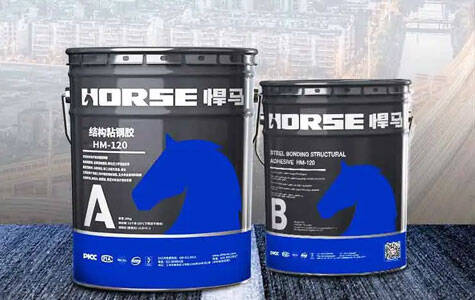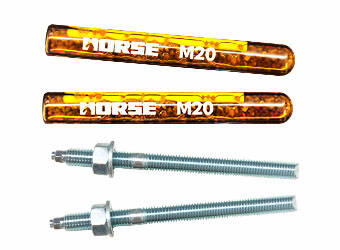Solutions
Horse Construction offers full range of structural strengthening materials with technical supports, documentation supports, products supports, project supports.
Bonded Steel Reinforcement Method for Bridge Repair in Docklands
Disease situation
In June 2015, it was found that there were concrete cracks and damages on the top of three piers (connecting piers) of the D-line bridge. Specifically, the concrete at the top of the pier No. 5~1 was cracked, and the length was 0.6 m; the concrete at the top of the pier No. 9~2 was cracked, and the length was 0.4 m. The concrete at the top of piers 13-2 was damaged, with an area of (0.4 × 0.4) m2; the supports of the piers were basically in good condition.
Maintenance part
In 2013, after the concrete maintenance of the pier tops of No. 9~1 and No. 13~1 of the D-line bridge. In June 2015, it was found that the concrete at the top of piers No. 9 to 2 and No. 13 to 2 was cracked, in order to improve the durability of the bridge and ensure the safety and reliability of the structure. In this maintenance, the piers 5-1, 9-2 and 13-2 of the D-line bridge are reinforced by bonding steel. At the same time, preventive protection construction was carried out for No. 5~2 piers of the D-line bridge.
Bonding steel reinforcement method
The bonding steel reinforcement method is designed to improve the bearing capacity of damaged structural components by attaching special building structural adhesives to bonding steel plates, and to provide reinforcement for damaged components. It is a new, convenient and effective reinforcement method for improving the bearing capacity of damaged reinforced concrete.
The specific construction of the method includes the following steps: crack treatment, burying grouting nozzle, sealing seam, sealing seam inspection, configuring slurry, grouting, sealing treatment, etc.
This project adopts the bonding steel reinforcement process to deal with the damaged piers and columns of an overpass on the Jingu Line. After completion, the bearing capacity of the bridge is effectively strengthened, and good results have been obtained, which are mainly reflected in:

1) Sturdy and durable. The structure repaired by this method can restore the ultimate bearing capacity of the original damaged component, improve the durability of the damaged component, and prolong the service life of the damaged component.
2) Fast construction. The biggest advantage of this method is non-stop construction and fast construction. Compared with the traditional method, the steel bonding method can shorten the construction period, and basically does not affect the use of components during the construction period.
3) Simple and lightweight. The whole process of construction can be kept dry, which has less pollution to the environment and is extremely convenient to construct. Since the quality of dry slabs to meet the requirements of use is much smaller than that of concrete, the self-weight of the structure after maintenance can be reduced without changing the structure before and after construction. form of connection.
4) Flexible and diverse. The flexible use of this method can deal with a variety of engineering problems, has strong usability and scope of application, and provides a good idea for the construction party.
5) Economical and reasonable. The cost is greatly reduced, reflecting the economical advantages of this method. On the one hand, due to the rapid construction, the work time due to construction is reduced, and the second is that the cost of this method is relatively low, so it is quite reasonable in terms of economy.
You can find anything here you are in need of, have a trust trying on these products, you will find the big difference after that.

High-strength anchor bolt with vinyl resin as main materials, composed of selected quartz sands, curing agents and glass tubes

Two-component epoxy modified epoxy structural strengthening adhesive for bonded steel plate to concrete

Modified epoxy resin structural perfusion adhesive, specifically for supporting adhesive bonded steel reinforcement